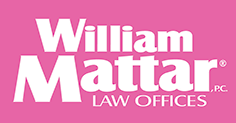

(844) - 444-4444

People die or are seriously injured at railroad crossings daily. Railroad crossing safety concerns are imperative. In 2021 there were over 1,600 collisions between cars and trains in the United States and in 2020 there were 500 collisions at transit-train crossings, according to the National Highway Traffic Safety Administration (NHTSA). The result: 133 people lost their lives and 644 were injured in railroad crossing-related accidents, many of which could have been prevented.
New York has rules of the road, contained in the Vehicle and Traffic Law and other sources, which provide guidance to motorists when crossing railroads. For example, Vehicle and Traffic Law section 1170(a), entitled “Obedience to signal indicating approach of train,” provides that: “Whenever any person driving a vehicle approaches a railroad grade crossing under any of the circumstances stated in this section, the driver of such vehicle shall stop not less than fifteen feet from the nearest rail of such railroad, and shall not proceed until he can do so safely.” The rule continues, explaining that the “foregoing requirements” will apply when:
Vehicle and Traffic Law section 1170(a) is just one of many rules of the road that can govern the operation of motor vehicles near railroad tracks.
New York driverss must always exercise reasonable care on the roadway. What constitutes reasonable care will, of course, depending on the circumstances. NHSTA has compiled a list of safety tips for navigating railroad crossings, including:
These are just some safety tips. New York motorists may be well advised to review other information NHTSA has posted online as part of its “Stop. Trains Can’t” campaign.
In the United States, a person or vehicle is hit by a train every three hours, according to Operation LifeSaver, Inc., an organization that provides rail safety education. As a result, it’s crucial to understand railroad signs and signals when driving or walking near railroad crossings. They are there to help motorists stay safe and guide traffic.
According to Operation Lifesaver, there are passive signs, which let drivers know they are approaching a highway-rail grade crossing, and there are active signs that warn drivers of the approach or presence of train traffic at railroad crossings. According to the NHTSA, rules can vary when navigating railroad crossing because of intersections and public and private driveways.
If you were injured in a car accident, you may be looking for an experienced personal injury attorney who can help you receive maximum compensation for your injury. The experienced car accident attorneys at William Mattar, P.C., can review your case and help determine your options moving forward. You can contact us 24/7 by submitting a contact form online, or by calling (844) 444-4444.





